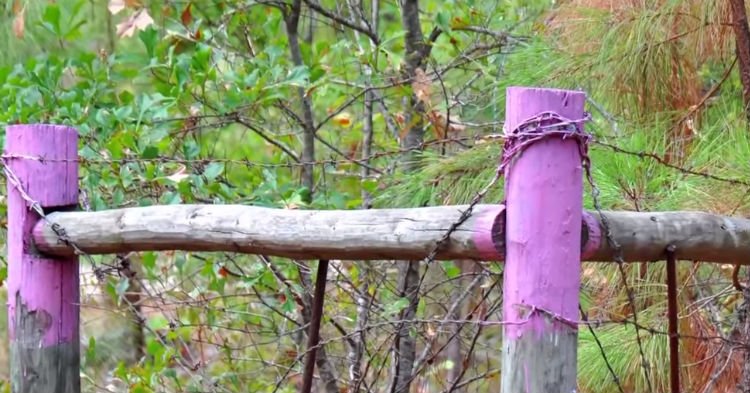
Have you ever seen a fence post or tree painted purple in the middle of nowhere? It turns out there is a very good reason for people to do this, and it has to do with a law that started in Arkansas in 1987.
Arkansas and other states with the purple paint law allow residents and land owners to mark the outskirts of their territory with bright purple spray paint. Instead of building a wall or fence around the property, Arkansas and residents of other states with a similar law understand that purple paint means no trespassing…
Why do states do this? Well because of the unpredictable weather patterns, especially considering the disastrous effect climate change is having on America’s southern states, “No Trespassing” signs can easily be blown away in a wind storm. Landowners need another way to mark the borders of their land.
And as any one from a rural area understands, if someone has a sprawling patch of land, how are they supposed to monitor their property’s boarders if they have to do so much on a daily basis? It’s just too much work for anyone to do on top of farming their land or managing their cattle.
Because the landowners in these areas with the purple paint law have so much land to watch over, they probably wouldn’t notice a single “No Trespassing” sign missing in the first place. It’s not like they go around checking on that every day.
The purple paint law allows landowners to spray it and forget it.
Besides telling any passerby that the land beyond belongs to someone, the purple mark is also known as “No Hunting Purple.” It signifies to hunters that this property belongs to an individual and to stay clear. It can help keep people out of their properties and keep people safe from stray bullets.
A number of states utilize the Purple Paint Law in order to signify “No Trespassing.” Here is the list:
- Texas
- Illinois
- Missouri
- North Carolina
- Maine
- Florida
- Idaho
- Arkansas
- Montana
- Arizona
- Kansas